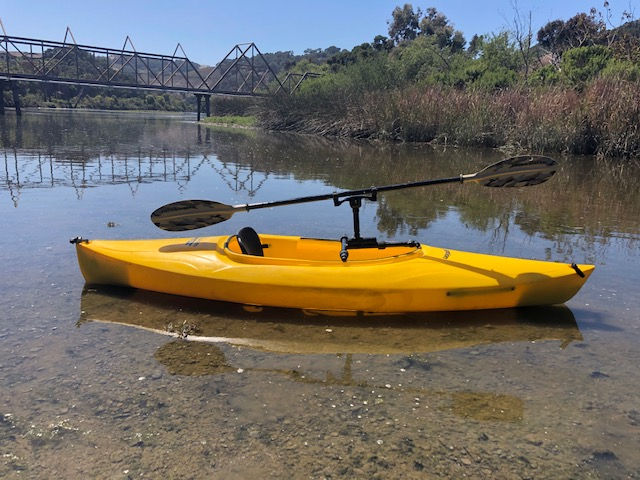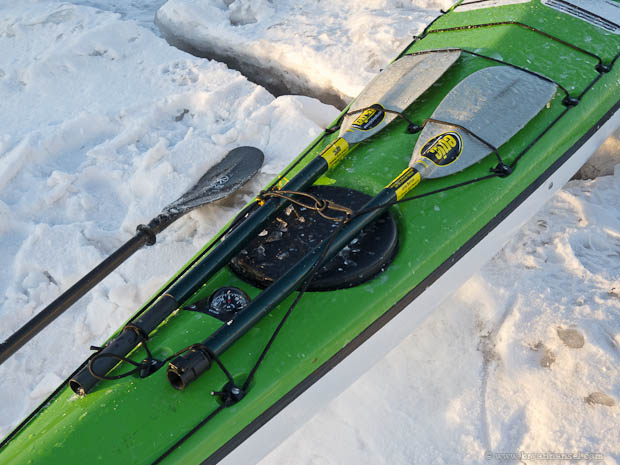
Are you a kayaking enthusiast searching for the perfect paddle holder for your beloved kayak? Look no further! In this article, we will guide you on how to choose the ideal size and style of kayak paddle holder that will make your kayaking adventures even more enjoyable. Whether you prefer a sleek and compact holder or a more versatile and spacious one, we have got you covered. So, read on to discover the key factors to consider when selecting the best paddle holder for your kayak and get ready to hit the water with confidence and convenience.
Factors to Consider
When choosing a kayak paddle holder, there are several factors that you need to consider to ensure you make the right choice for your needs. It’s important to think about the kayak type, material, attachment method, storage capacity, adjustability, weight, durability, compatibility, price, and brand reputation. By taking these factors into account, you can find a paddle holder that is not only functional but also suits your individual preferences and paddling style.

This image is property of static.wixstatic.com.
Kayak Type
The type of kayak you have plays a crucial role in determining the appropriate paddle holder for your needs. There are two main types of kayaks to consider: sit-on-top kayaks and sit-in kayaks.
Sit-on-top kayaks feature an open deck design, allowing you to sit on top of the kayak rather than inside it. These kayaks are great for recreational paddling and are popular among beginners and those who enjoy fishing. When choosing a paddle holder for a sit-on-top kayak, you want to ensure that it is compatible with the wider deck and offers secure storage for your paddle.
Sit-in kayaks, on the other hand, have an enclosed cockpit where you sit inside the kayak. These kayaks are typically used for touring, sea kayaking, and whitewater paddling. When selecting a paddle holder for a sit-in kayak, it’s important to consider whether it can be easily attached to the kayak’s deck or cockpit and provides quick access to your paddle.
Material
The material of the paddle holder plays a significant role in its durability, weight, and overall performance. Here are some common materials used in kayak paddle holders:
-
Plastic: Plastic paddle holders are lightweight, affordable, and resistant to corrosion. They are a popular choice for recreational kayaks and offer excellent durability.
-
Aluminum: Aluminum paddle holders are lightweight, strong, and resistant to rust. They provide a sturdy and reliable option for various kayaking activities.
-
Fiberglass: Fiberglass paddle holders are known for their durability and stiffness. They offer a balance between weight and strength, making them a popular choice for performance-oriented paddlers.
-
Carbon Fiber: Carbon fiber paddle holders are extremely lightweight and offer excellent strength and stiffness. They are favored by professional paddlers and those looking for high-performance gear.
-
Wood: Wood paddle holders provide a traditional and aesthetically pleasing option. They are often handcrafted and offer a unique touch to your kayak. However, they may require more maintenance compared to other materials.
Attachment Method
The attachment method of a paddle holder determines how it is secured to your kayak. Various attachment methods are available to suit different kayak models and personal preferences. Here are some common attachment methods:
-
Clamp-On: Clamp-on paddle holders feature adjustable clamps that securely attach to the kayak’s deck or cockpit. They are versatile and can be easily moved or adjusted as needed.
-
Track Mount: Track mount paddle holders attach to kayak tracks, which are rails often found on the sides of the kayak. They provide a secure and adjustable mounting option, allowing you to customize the position of your paddle holder.
-
Deck Mount: Deck mount paddle holders are designed to be permanently attached to the kayak’s deck. They provide a stable and secure option but may limit adjustability.
-
Suction Cup: Suction cup paddle holders use suction cups to attach to the kayak’s deck or cockpit. While they offer easy installation and removal, they may not be as secure as other attachment methods.
-
Velcro: Velcro paddle holders have adjustable straps with Velcro closures that wrap around the kayak’s deck or cockpit. They provide a simple and effective attachment method.
-
Bungee: Bungee paddle holders use elastic cords to hold your paddle securely in place. They are often found on sit-on-top kayaks and offer a quick and convenient storage solution.
Storage Capacity
Storage capacity is an important factor to consider when choosing a paddle holder. Depending on your needs, you may require a paddle holder that can accommodate additional gear, such as fishing rods, drinks, snacks, or even multiple paddles. Here are some considerations for storage capacity:
-
Number of Paddles: Determine how many paddles you want to store in the holder. Some paddle holders are designed to hold a single paddle, while others can accommodate multiple paddles.
-
Additional Gear: If you plan to bring fishing rods, camera equipment, or other accessories on your kayaking trips, look for a paddle holder with additional storage options for these items.
-
Rod Holders: If fishing is your primary activity, consider a paddle holder that includes built-in rod holders. This will allow you to keep your fishing rods secure and easily accessible.
-
Drinks and Snacks: Some paddle holders come with compartments or cup holders where you can store your drinks and snacks. This can be particularly convenient for longer trips or outings.

This image is property of static.wixstatic.com.
Adjustability
The adjustability of a paddle holder is crucial for finding the most comfortable paddle position and ensuring a proper fit for different paddlers. Look for these adjustable features:
-
Angle Adjustment: A paddle holder with angle adjustment capabilities allows you to modify the angle at which your paddle sits. This can help you find the most ergonomic and efficient paddling position.
-
Height Adjustment: The ability to adjust the height of your paddle holder is important, especially for taller or shorter individuals. Having the paddle at the correct height can improve your stroke efficiency and prevent strain.
-
Paddle Shaft Diameter Compatibility: Ensure that the paddle holder can accommodate the diameter of your paddle shaft. Most paddle holders are designed to fit standard paddle shaft sizes, but it’s always a good idea to double-check for compatibility.
Weight
The weight of a paddle holder can impact the overall weight distribution and handling of your kayak. Consider the following weight categories when choosing a paddle holder:
-
Lightweight: Lightweight paddle holders are ideal for those looking to minimize the overall weight of their kayak or who frequently transport their kayak. They are typically made from materials like plastic or carbon fiber.
-
Moderate Weight: Moderate weight paddle holders provide a balance between durability and weight. They are suitable for most paddlers and offer a good compromise between performance and ease of use.
-
Heavyweight: Heavyweight paddle holders are often more robust and built for durability in rugged conditions. They are suitable for kayakers who prioritize strength and longevity over weight.

This image is property of i0.wp.com.
Durability
When choosing a paddle holder, you want to ensure that it is durable enough to withstand the demands of kayaking. Look for features that contribute to the overall durability of the paddle holder:
-
Weather Resistance: A durable paddle holder should be able to withstand exposure to different weather conditions, including rain, sun, and saltwater. Look for materials that are resistant to corrosion and fading.
-
UV Resistance: Paddle holders exposed to prolonged periods of sunlight can degrade over time. Choose a paddle holder that is UV resistant to prevent damage from the sun’s harmful rays.
-
Impact Resistance: Paddle holders need to withstand accidental bumps and impacts without breaking or becoming loose. Look for features like reinforced mounting points or impact-resistant materials.
Compatibility
Compatibility is an essential factor to consider, especially if you already have a specific kayak or paddle in mind. Here are three types of compatibility to bear in mind:
-
Universal Fit: Universal fit paddle holders are designed to fit a wide range of kayaks. They offer versatility and can be used with different kayak brands and models.
-
Kayak Brand Specific: Some paddle holders are specifically designed to fit certain kayak brands. If you have a kayak from a specific brand, you may want to consider a paddle holder that is compatible with it for a perfect fit.
-
Paddle Brand Specific: Certain paddle holders are designed to work best with specific paddle brands, ensuring a secure fit for your paddle. If you already have a paddle, check if there are any paddle holders specifically made to accommodate it.

This image is property of i.ytimg.com.
Price
Price is always a consideration when making any purchase, and choosing a kayak paddle holder is no exception. Set a budget for yourself and explore the options within that range. Remember that price can vary depending on the paddle holder’s features, material, and brand reputation.
Brand Reputation
Considering the brand reputation when choosing a paddle holder can give you confidence in the product’s quality and customer service. Look for paddle holder brands with a history of positive customer reviews and reliable warranty policies. A reputable brand often indicates that they stand behind their products and prioritize customer satisfaction.
By carefully considering these factors – kayak type, material, attachment method, storage capacity, adjustability, weight, durability, compatibility, price, and brand reputation – you can choose a kayak paddle holder that meets your specific needs and enhances your overall kayaking experience. Happy paddling!

This image is property of u7q2x7c9.stackpathcdn.com.





